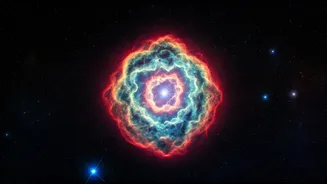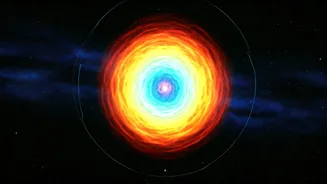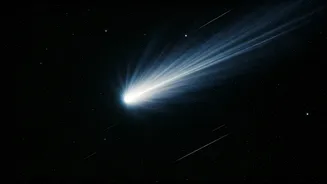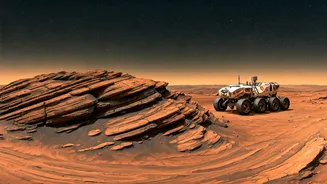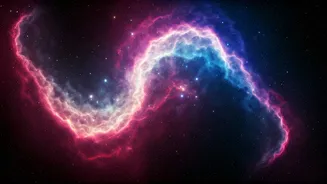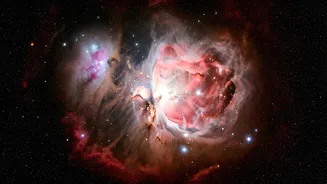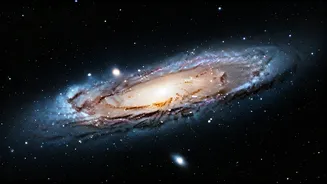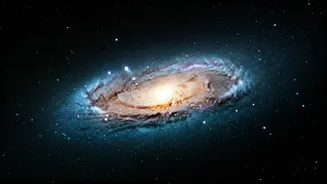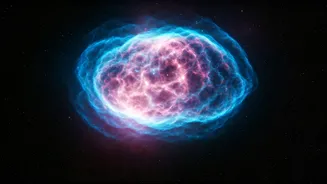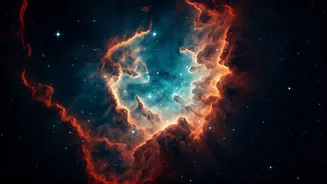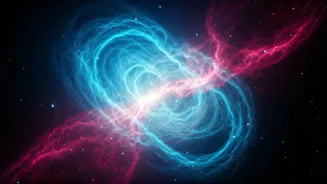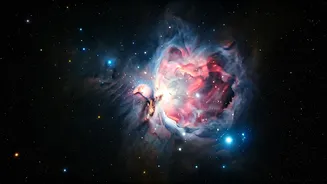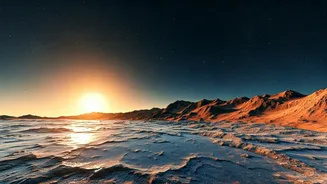Cosmic Wonders Unveiled
NASA's recent sharing of 12 new, awe-inspiring images marks another chapter in humanity's exploration of the cosmos. These images, meticulously captured
by various space-based telescopes and probes, offer unique insights into celestial phenomena. This article aims to explore a selection of these images, each of which reveals a different facet of the universe. The images capture a variety of celestial objects, including galaxies, nebulae, and planets. They highlight the incredible scale and beauty of the cosmos, providing a fresh perspective on the universe. These images provide scientific data and also serve as a reminder of the universe's magnificence, inviting viewers to appreciate the beauty that surrounds us.
Galaxies in Focus
Several of the images showcased distant galaxies, with intricate structures and details previously unseen. These images were captured using advanced technologies, allowing for a deeper look into the formation and evolution of these galaxies. The swirling arms, bright cores, and faint halos of the galaxies are presented in vibrant color and clarity. Through these images, scientists are able to study the composition of galaxies, analyze star formation processes, and gain a clearer understanding of the universe's evolution. Each galaxy contains billions of stars, planets, and other celestial bodies. The images offer valuable clues about the dynamics of the universe. They contribute to our understanding of cosmic phenomena. They provide new material for scientists worldwide.
Nebulae: Stellar Nurseries
Some of the newly shared images focus on nebulae, vast clouds of gas and dust where stars are born. These images capture the vibrant colors and complex structures of nebulae, showcasing the stellar nurseries where new stars emerge. The data provides insights into the processes of star formation, highlighting the intricate interplay of gas, dust, and energy that leads to the birth of stars. These images highlight the beauty and dynamism of nebulae, showing the stages of star formation. Studying these regions allows scientists to learn more about the life cycles of stars, the distribution of elements in the cosmos, and the dynamic processes that drive galactic evolution. The vivid colors in these images often represent different elements and the energy emitted during star formation.
Planetary Explorations
NASA also presented images of planets within and beyond our solar system, captured by various probes and telescopes. These images provide detailed views of the surfaces, atmospheres, and environments of these planets. These images offer scientists valuable information about planetary geology, weather patterns, and the potential for life beyond Earth. They also highlight the diverse characteristics of planets, from the ice-covered poles of Mars to the turbulent atmospheres of gas giants like Jupiter. These images provide a great way to learn about the formation and evolution of planets. Every image serves as a powerful reminder of the universe's vastness. They showcase the remarkable discoveries that are ongoing with space exploration.
Impact and Future
The release of these 12 images by NASA will undoubtedly inspire further scientific inquiry and space exploration. The images will be used by researchers worldwide to advance our understanding of the universe. These images are also expected to motivate the next generation of scientists and explorers. By capturing the beauty and complexity of the cosmos, the images encourage curiosity and a sense of wonder. The impact of these images extends beyond scientific research, reaching a wider audience and raising awareness about the importance of space exploration. NASA's commitment to sharing these remarkable images showcases its dedication to providing everyone with access to the wonders of the universe.
